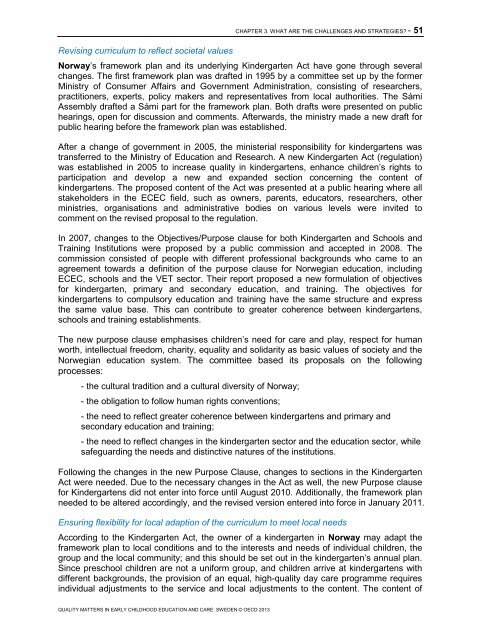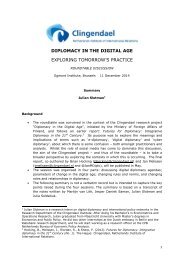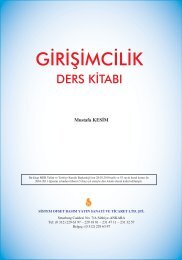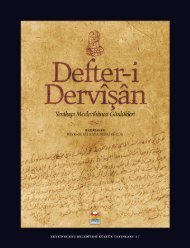SWEDEN%20policy%20profile%20-%20published%2005-02-2013
SWEDEN%20policy%20profile%20-%20published%2005-02-2013
SWEDEN%20policy%20profile%20-%20published%2005-02-2013
You also want an ePaper? Increase the reach of your titles
YUMPU automatically turns print PDFs into web optimized ePapers that Google loves.
Revising curriculum to reflect societal values<br />
QUALITY MATTERS IN EARLY CHILDHOOD EDUCATION AND CARE: SWEDEN © OECD <strong>2013</strong><br />
CHAPTER 3. WHAT ARE THE CHALLENGES AND STRATEGIES? - 51<br />
Norway’s framework plan and its underlying Kindergarten Act have gone through several<br />
changes. The first framework plan was drafted in 1995 by a committee set up by the former<br />
Ministry of Consumer Affairs and Government Administration, consisting of researchers,<br />
practitioners, experts, policy makers and representatives from local authorities. The Sámi<br />
Assembly drafted a Sámi part for the framework plan. Both drafts were presented on public<br />
hearings, open for discussion and comments. Afterwards, the ministry made a new draft for<br />
public hearing before the framework plan was established.<br />
After a change of government in 2005, the ministerial responsibility for kindergartens was<br />
transferred to the Ministry of Education and Research. A new Kindergarten Act (regulation)<br />
was established in 2005 to increase quality in kindergartens, enhance children’s rights to<br />
participation and develop a new and expanded section concerning the content of<br />
kindergartens. The proposed content of the Act was presented at a public hearing where all<br />
stakeholders in the ECEC field, such as owners, parents, educators, researchers, other<br />
ministries, organisations and administrative bodies on various levels were invited to<br />
comment on the revised proposal to the regulation.<br />
In 2007, changes to the Objectives/Purpose clause for both Kindergarten and Schools and<br />
Training Institutions were proposed by a public commission and accepted in 2008. The<br />
commission consisted of people with different professional backgrounds who came to an<br />
agreement towards a definition of the purpose clause for Norwegian education, including<br />
ECEC, schools and the VET sector. Their report proposed a new formulation of objectives<br />
for kindergarten, primary and secondary education, and training. The objectives for<br />
kindergartens to compulsory education and training have the same structure and express<br />
the same value base. This can contribute to greater coherence between kindergartens,<br />
schools and training establishments.<br />
The new purpose clause emphasises children’s need for care and play, respect for human<br />
worth, intellectual freedom, charity, equality and solidarity as basic values of society and the<br />
Norwegian education system. The committee based its proposals on the following<br />
processes:<br />
- the cultural tradition and a cultural diversity of Norway;<br />
- the obligation to follow human rights conventions;<br />
- the need to reflect greater coherence between kindergartens and primary and<br />
secondary education and training;<br />
- the need to reflect changes in the kindergarten sector and the education sector, while<br />
safeguarding the needs and distinctive natures of the institutions.<br />
Following the changes in the new Purpose Clause, changes to sections in the Kindergarten<br />
Act were needed. Due to the necessary changes in the Act as well, the new Purpose clause<br />
for Kindergartens did not enter into force until August 2010. Additionally, the framework plan<br />
needed to be altered accordingly, and the revised version entered into force in January 2011.<br />
Ensuring flexibility for local adaption of the curriculum to meet local needs<br />
According to the Kindergarten Act, the owner of a kindergarten in Norway may adapt the<br />
framework plan to local conditions and to the interests and needs of individual children, the<br />
group and the local community; and this should be set out in the kindergarten’s annual plan.<br />
Since preschool children are not a uniform group, and children arrive at kindergartens with<br />
different backgrounds, the provision of an equal, high-quality day care programme requires<br />
individual adjustments to the service and local adjustments to the content. The content of








